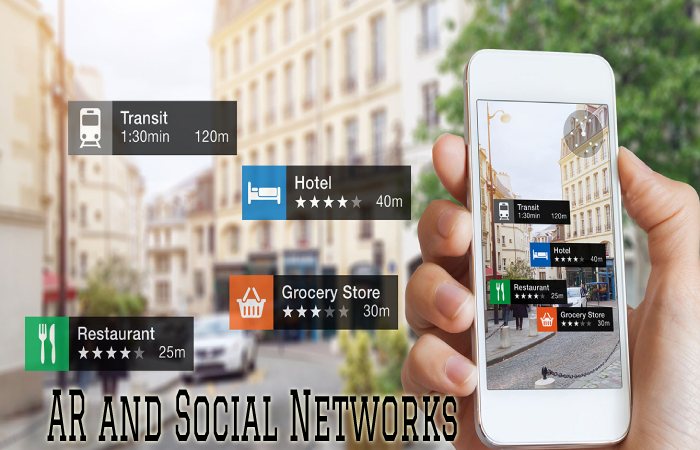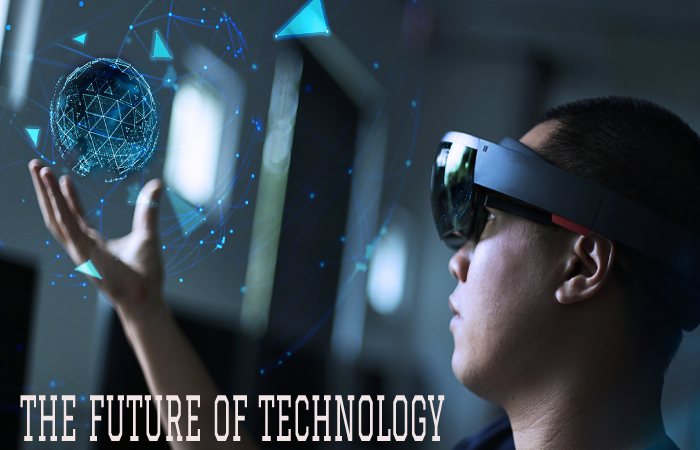Augmented Reality, we hear a lot about it. It interferes with our smartphones, our tablets, our computers, our televisions.
But what is Augmented Reality?
Numerized offers you everything you need to know about Augmented Reality through this file, from its origins to current uses, including concrete examples.
You will have all the elements to become unbeatable on the subject.
What is Augmented Reality?
Augmented Reality (AR) is a technology that overlays virtual elements, such as images, videos, or 3D models, onto the real-world environment, enhancing the user’s perception and interaction with the physical world. AR combines computer-generated content with the user’s real-time environment, typically through smartphones, tablets, smart glasses, or other wearable devices.
Unlike virtual reality, which creates an entirely immersive digital environment, augmented reality supplements and enhances the real world with virtual objects. AR can be experienced in various ways, including through mobile apps, dedicated AR devices, or headsets.
AR and Social Networks:
Social networks have not been able to miss AR and participate in the democratization of this technology and the creation of new uses.

One recreational use of AR that we all know about in social media is the use of filters.
No social platform escapes it, and it is even filters or lenses that have launched the fame of some, like Snapchat.
AUGMENTED REALITY: A PROFESSIONAL TOOL
Unlike virtual reality, augmented Reality was mainly develop for experimental and professional purposes (army, industry, etc.).
Very quickly, companies understood the challenges of this technology and sought to appropriate it. However, technological barriers have long limited their use.
It was necessary to use a computer, a monitor, and other bulky peripherals, challenging to use in the field.
With the arrival of smartphones and tablets, the AR sector is booming, and many companies find professional purposes in their use.
A BRIGHT FUTURE FOR AR
INCREASED NOTORIETY FOR AR
The augmented reality experienced in 2016 a significant upset. Indeed, following the enormous success of the Pokémon Go smartphone game!
This technology’s notoriety has drastically increased, allowing making it known to as many people as possible. AR is now easily understood by the general public.
We can also mention Snapchat, which now has integrated filters (lenses) in AR for a few years. Without really knowing it, the general public is already using this technology!
THE FUTURE OF TECHNOLOGY?
Several solutions can be considered in the more or less short term.
Continuing the ARKit and ARCore adventure for AR on mobile seems to be the most promising short-term solution.
And also, Apple is highly involved in AR and is continually improving its tool.
The next update, available on iOS 12, also brings several features such as multiplayer and a new application integrated into the new OS.

Moreover, In the longer term, the future of augmented reality is likely to lie in AR headsets and glasses.
Commonly refer to as “mixed reality,” this technology can be define as enhancing AR.
Introduce by Microsoft’s Hololens in 2015, it is now follow by the Magic Leap One, or the Meta 2.
The particularity of these helmets is that they can scan all the room surfaces, allowing you to place any virtual object there.
But, It could potentially be a revolution in the way we consume content. Imagine an infinitely modifiable virtual overlay, visible to anyone wearing a device.
However, Apple would also be in the game since more than founded rumors would speak of the development of augmented reality glasses for 2020.
And also, This would also stick with the recent acquisitions of specialized companies by the Cupertino company.
The future of technology is closely tied to augmented reality due to its vast potential and numerous applications.
Here are some areas where AR is expected to have a significant impact:
Entertainment and Gaming
AR can revolutionize gaming experiences by merging virtual elements with the real world. It enables interactive and immersive gameplay, such as Pokémon Go, where virtual creatures appear in real-world locations. AR can also enhance live events, theme parks, and entertainment venues by overlaying digital content onto physical spaces.
Education and Training
AR can transform learning by providing interactive and visual educational experiences. It can bring textbooks to life, allowing students to visualize complex concepts more engagingly. AR can also be used for training, such as simulating real-life scenarios for medical professionals, pilots, or engineers.
Retail and E-commerce
AR has the potential to revolutionize the retail industry by offering virtual try-on experiences, allowing customers to see how products would look or fit in their natural environment. AR can also provide interactive product demonstrations, virtual showrooms, and personalized shopping experiences.
Architecture and Design
AR can be used in architecture and design to create virtual 3D models and visualize how buildings, interiors, or furniture would look in natural spaces. It allows architects and designers to present their ideas more effectively and enables clients to understand the final product better before it is built.
Healthcare
AR can enhance medical procedures and training by overlaying relevant information onto the surgeon’s field of view during surgeries. It can also assist in diagnosing and visualizing medical conditions by overlaying patient data onto their bodies, aiding in proper treatment.
Navigation and Wayfinding
AR can provide intuitive and interactive navigation systems, overlaying directions or points of interest in the real world. This technology can be beneficial for pedestrians, tourists, or outdoor activities.
These are just a few examples of how augmented reality is shaping the future of technology. As AR continues to evolve and become more accessible, it has the potential to revolutionize various industries and enhance our daily lives with immersive and interactive experiences.





